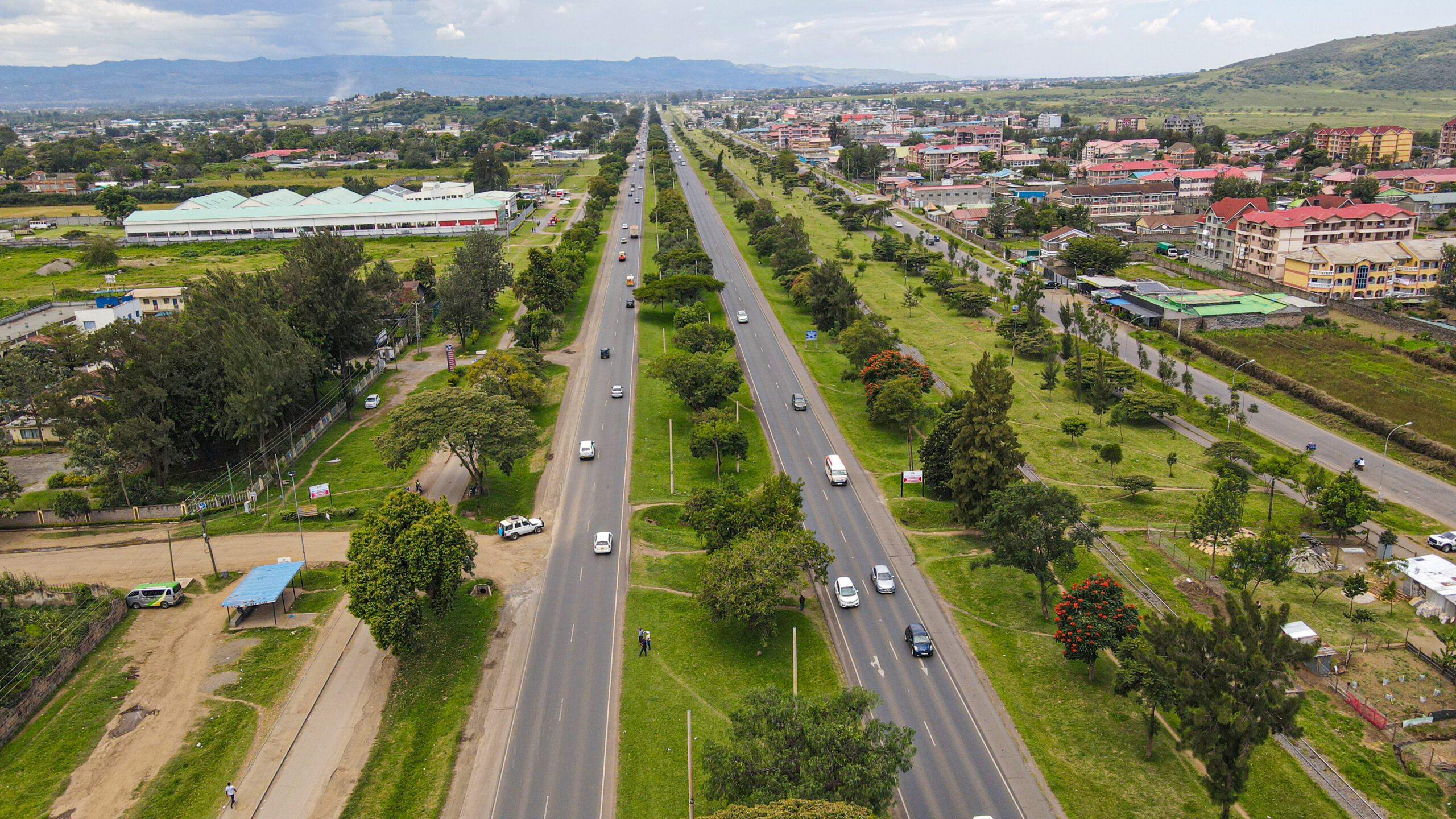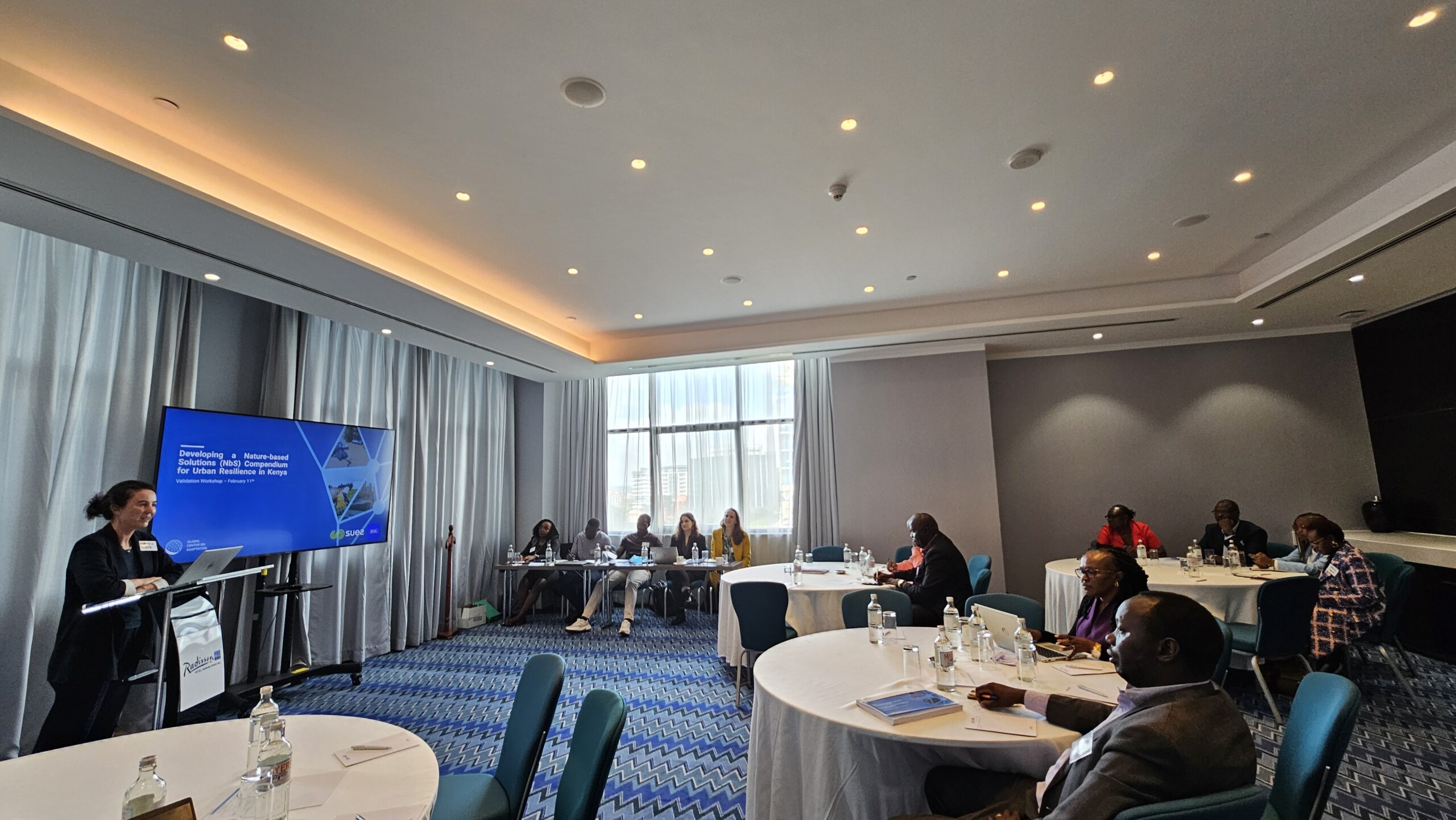Bridging Policy and Practice: Advancing Nature-Based Solutions in Kenya
The city of Nakuru, nestled between the slopes of the Menengai Crater National Park and the lake from which it takes its name, is prone to flooding during heavy rains. With the city’s drainage system struggling to manage the sheer volume of water, floods have often led to property damage, disrupted livelihoods, and loss of life. County and City leaders have recognised that simply investing in stormwater infrastructure is not enough and embraced Nature-based Solutions (NbS) in their urban policies and development plans. These have been implemented through multiple interventions across the urban area from green corridors to urban parks.
Along Kenyatta Avenue and Moi Street the once flood-prone walkways are now lined with leafy green canopies providing shade for pedestrians, as well as stormwater retention areas and permeable surfaces that absorb excess rainwater. Funded under the World Bank’s First Kenya Urban Support Program (KUSP1), these measures that reduce flooding and urban heat make streets more pedestrian-friendly and attractive, benefitting the public and businesses alike, and contributing to a more climate-resilient Nakuru.
Recognizing success stories like Nakuru is critical as Kenya’s cities face increasing climate-related challenges, from urban flooding to prolonged droughts, putting pressure on infrastructure, water resources, public safety and livelihoods. Nature-based Solutions (NbS) provide an innovative pathway, using ecological processes to enhance resilience while delivering multiple benefits, such as improved water management, biodiversity conservation and greener public spaces. GCA is developing a Compendium documenting similar stories to inspire scaling up of NbS in Kenyan cities. This is being carried out under the Second Kenya Urban Support Program (KUSP2), a World Bank-financed initiative led by the State Department for Housing and Urban Development (SDHUD), in collaboration with the Council of Governors (CoG) and the Department for Refugee Services (DRS).
These examples have been compiled in an NbS Inventory, a comprehensive collection of NbS interventions across Kenyan cities. Lessons learned from the inventory’s examples and the NbS Opportunity Scan conducted by the World Bank’s Global NbS Team in six cities ( Eldoret, Kilifi, Kisumu, Mandera Nakuru, and Wote) financed by City Climate Finance Gap Fund will form the foundation of GCA’s NbS Compendium, designed to provide municipalities with practical guidance for integrating NbS into urban planning. Building on the NbS Inventory, the Compendium prioritizes the most relevant examples, offering in-depth analysis and targeted recommendations to support implementation. To ensure its relevance, a validation workshop held on 11th February, 2025 in Nairobi brought together local practitioners, policymakers, and technical experts to refine the proposed strategies and recommendations, ensuring they are actionable and tailored to Kenya’s urban realities.

Nakuru Green Corridors
Bridging National and Local Approaches to NbS
One of the key takeaways from the workshop was the need for closer coordination between national, county and city/municipal levels to ensure that NbS policies translate into action on the ground. Kenya has made significant progress in developing a supportive policy framework for NbS through the Climate Change Act and the Climate Change Act, yet effective implementation at the city/municipal level remains challenging due to governance complexities and coordination constraints. Workshop participants emphasized that enhancing collaboration between national and county governments would help create clearer mandates for NbS integration. Additionally, fostering peer-learning exchanges between counties can accelerate NbS adoption by sharing practical experiences and best practices.

Validation Workshop
Unlocking Existing Resources for NbS Implementation
Despite the common perception that funding is a major constraint, the workshop highlighted that some untapped financing opportunities exist within Kenya’s environmental policies and financial structures1. Participants discussed whether Environmental and Social Impact Assessments (ESIA) could be leveraged as a tool to integrate NbS into urban infrastructure projects, while Kenya’s proposed restoration fee could serve as an additional funding source for NbS investments. Community-led initiatives have demonstrated that NbS can be implemented effectively by leveraging local resources, labour, and knowledge, reducing dependency on large-scale external funding. By recognizing and utilizing these available resources, municipalities can accelerate NbS adoption without relying solely on new funding streams.
Strengthening Monitoring & Evaluation for Long-Term Impact
The lack of standardized monitoring frameworks for NbS projects makes it difficult to track success, ensure sustained benefits, and secure future investment. Without clear indicators to measure success, it becomes difficult to track progress, secure future investments, and ensure that NbS interventions provide sustained benefits. The discussions reinforced the importance of establishing a national NbS monitoring framework, developing resilience scorecards for municipal planning, and fostering partnerships with research institutions to generate reliable impact data. Stronger data collection and evaluation will support more informed decision-making and improve investment planning for future NbS initiatives.
The Role of Local Adaptation in Scaling NbS
For NbS to be successfully integrated into urban planning, they must be adapted to local circumstances. Misconceptions that NbS are only viable in certain climates or that they lack scaleability often create resistance to adoption. However, case studies shared during the workshop demonstrated that many NbS approaches are already proving effective across diverse urban and climatic conditions in Kenya. Participants stressed the importance of testing and learning, allowing communities and decision-makers to refine NbS strategies over time. Discussions also highlighted the risks of greenwashing, emphasizing the need to distinguish genuine NbS interventions from superficial sustainability claims. By fostering experimentation, knowledge-sharing, and practical case studies, the workshop emphasized that NbS should be viewed as adaptable solutions rather than one-size-fits-all interventions.
From Insights to Action: scaling up NbS in Kenyan Cities
The insights from the workshop highlight the need for practical, evidence-based guidance to scale up NbS in Kenya. The NbS Compendium will do just that by providing actionable recommendations to address the challenges raised, emphasizing stronger collaboration between urban planning authorities, a shift from problem-centric to solution-centric planning, and the integration of NbS into municipal development strategies. With policy momentum and institutional commitment, Kenya is well-positioned to scale NbS. By translating strategy into coordinated action, financial alignment, and structured monitoring, NbS can become a core component of urban resilience efforts.
The NbS Compendium for Kenya will be available in May 2025. Incorporating insights from practitioners and policymakers, it will serve as a roadmap for scaling practical, adaptable NbS solutions across Kenyan cities. Ultimately, the goal is to move from strategy to action, creating greener, healthier urban spaces that benefit both communities and the environment.
The ideas presented in this article aim to inspire adaptation action – they are the views of the author and do not necessarily reflect those of the Global Center on Adaptation.